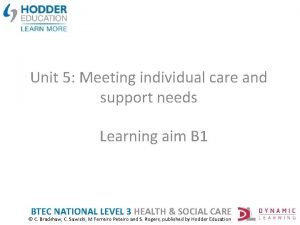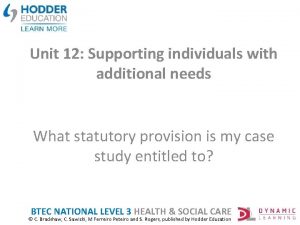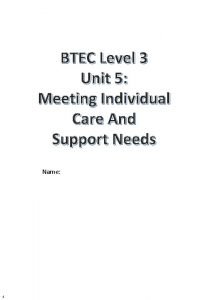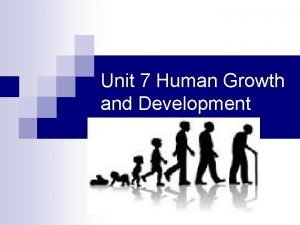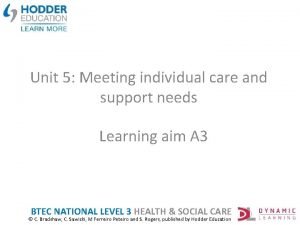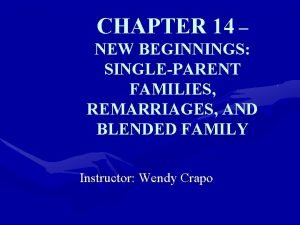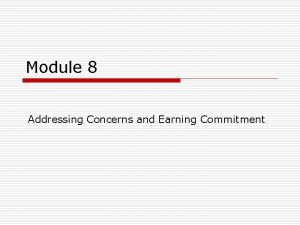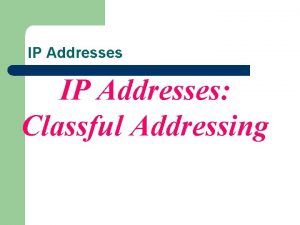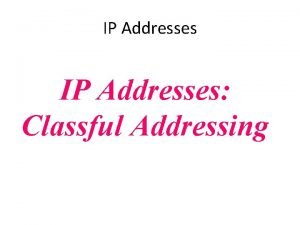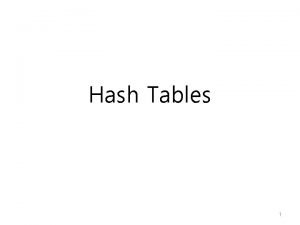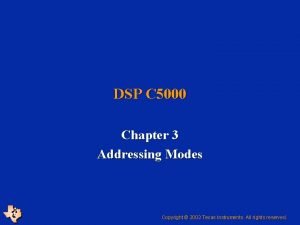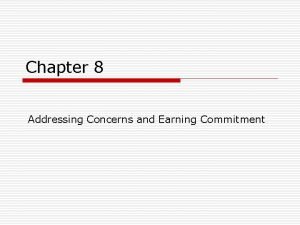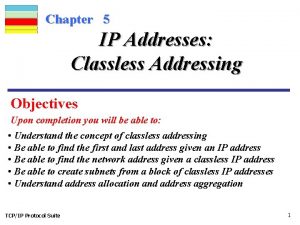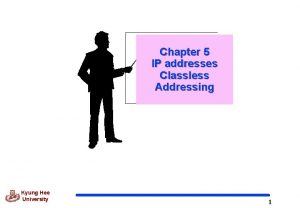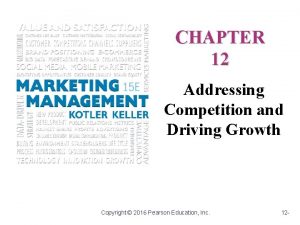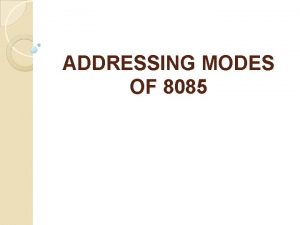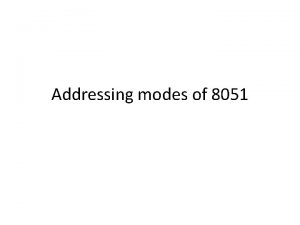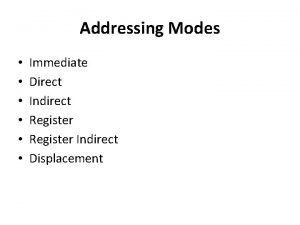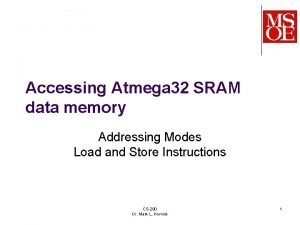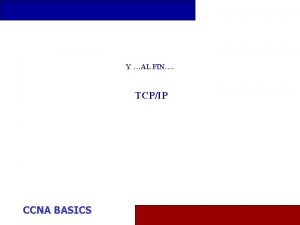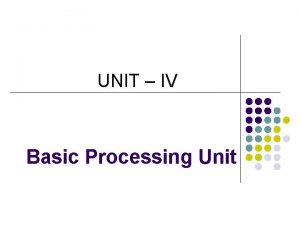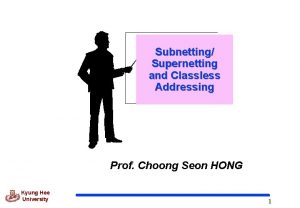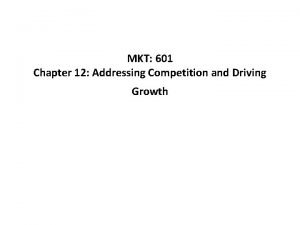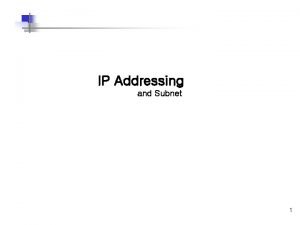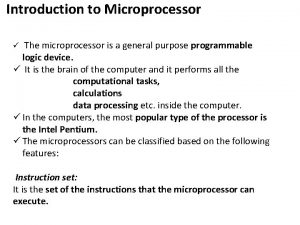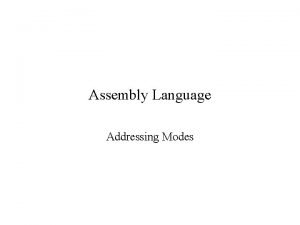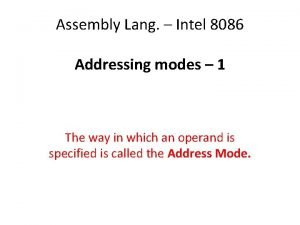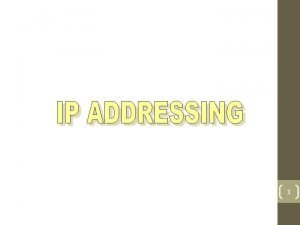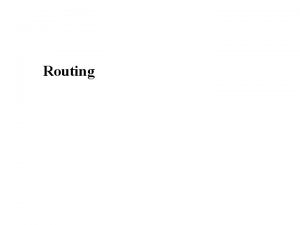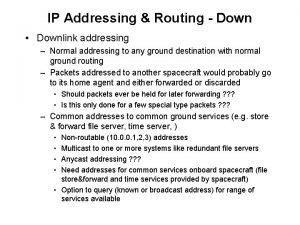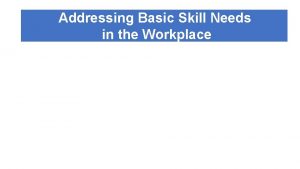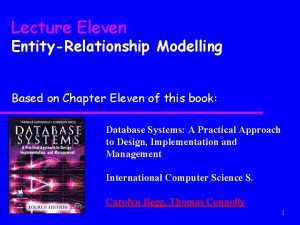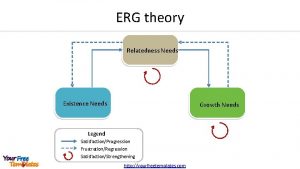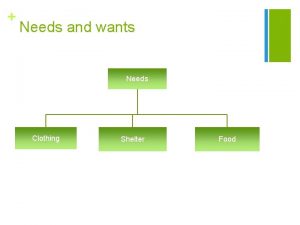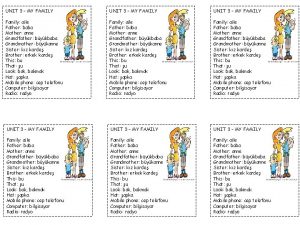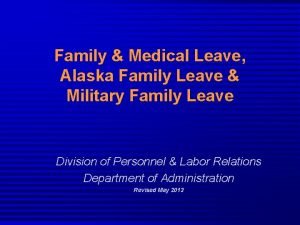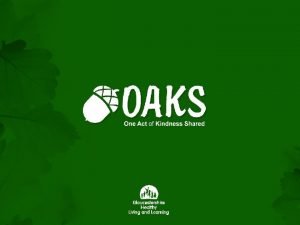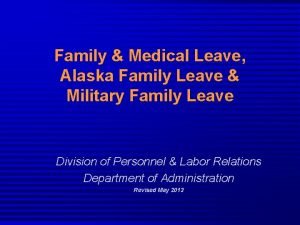UNIT ELEVEN ADDRESSING THE NEEDS OF THE FAMILY




















































- Slides: 52

UNIT ELEVEN ADDRESSING THE NEEDS OF THE FAMILY

Introduction • a family consists of one or more individuals who share a residence or live near one another, possess some common emotional bond and engage in interrelated social positions, roles and tasks.

Universal Characteristics of Families Every family is a small – social system • A families are interdependent; each member’s actions affect others members • Families maintain boundaries

• Family exchange energy: • - exchange materials, information • - Contribute to the community by working, consuming goods services…. • Families are adaptive behavior:

• Families are goal directed: • - exist for purpose, for example to • - establish and promote the development of their members, to provide love security, assistance etc… • Every family has its own cultural values and rules.


Every family has structures Traditional family: • Nuclear family (husband, wife, and children Live in common house) • Nuclear –dyad (husband, wife, with no children or grow children out side home • single parent (one adult male/female living alone • multigenerational (several age group live together. E. g. , widowed women live with divorced daughter with grand children’s)

Every family has certain basic function a) affection b) provide security and acceptance meet there members physical need (food, shelter, clothing c)affiliation(belonging ) & companionship ﺍﻟﺮﻓﻖ • development of communication pattern • Establishment of durable bond ﺍﻟﻤﺴﺎﻧﺪﺓ not broken by distance, time… ex. • gathering during holiday, weeding …even when scattered. ﻣﺒﻌﺜﺮ

• d) socialization Internalization of value Guidance for internal and external relation ship e) control – maintenance of social control (ex. • appropriate dressing • division of labor ﺗﻘﺴﻴﻢ ﺍﻟﻌﻤﻞ • allocate ﺗﺨﺼﻴﺺ various tasks, responsibilities …. . • Every family moves through stages in its life cycle two broad stages • period of expanding Æwhen the family add new member/roles • period of contracting Æwhen members leave or dead.

Characteristics of healthy families • • • • Healthy interaction among members Discuss problems Confront each other Share ideas and concern …. etc Enhancement of individual development Promote each members growth Effective structuring of relation ship Structure their role relationship to meet changing family needs over time. (flexibility of role) Active coping effort Actively attempt to over come life’s problems and issues Healthy environment and life-style -create safe and hygienic living conditions for their members. Regular links with the broader community

• Maintain dynamic ties the broader community • Participate regularly in external groups and activities • Application of nursing process on promoting FH Family health Assessment • provides information’s on the measuring a current health situation of family member and emotional support • Main areas of assessment includes: Family demography (age, sex, education, occupation, etc…. ) Physical environment (housing space, climate, dietary pattern…) Psychological and spiritual environment (mutual respect, support, Family structure and role (division of labor, socialization process allocation and use of power…)

Family function (ability to carry out appropriate developmental tasks…. Family value and belief Family communication pattern (frequency and quality of communication with in the family, b/n the family and its environment) Family decision making pattern (how, by whom, when decision is made) Family problem solving pattern (how a family handles its problem Family coping pattern (how a family handles conflicts and life change, family perception and response to stressors) Family health behavior (family health history, current health status, health belief, use of health resource. . . )

Family Nursing Diagnosis • example: • Potential for enhanced parenting • Potential for role conflict related to prolonged separation • Altered family process related to emergency hospital admission of chilled • Altered family process related to unplanned pregnancy.

• UNIT TWELVE • PROMOTING AND PROTECTING THE HEALTH OF THE OLDER ADULT POPULATION


Introduction • Peoples are living longer as a result of improved health care, eradication and control of communicable disease, use of antibiotic and other medicines and accessibility to a better quality of life for residents. • The older population does, have higher percentage (80%) of chronic conditions, some of which may limit activities. • These chronic illnesses include arthritis, heart diseases, high BP, DM, visual and hearing impairments.

• Good health in elderly means maintaining the maximum degree possible of physical, mental, and social rigor. ﺻﺎﺭﻡ • It means being able to adapt, to continue to handle stress, and to be active and involved in life and living. • healthy aging means being able to function, even when disabled, with a minimum of ordinary help from others.

• Wellness is influenced by many factors including personality traits • life experiences • current physical health • current societal support • some elderly people demonstrate maximum adaptability, resourcefulness, optimism ﺍﻟﺘﻔﺎﺅﻞ , and activity, however, misconception often arises from negative personal experience, myths shared through out the ages, and a general lack of information on older people. Some of these misconception includes

• Most older adults can’t live independently • Most old people have diminished intellectual capacity/are senile • All older people content and serene ﺍﻟﻬﺪﻭﺀ • Older adults can/t be productive or active • All older adults are resistant to change.


Health problems of elderly people • • • • Problems associated with aging process Cataract Glaucoma Deafness Reduced vision Immobility (due to changes in joints and bones) Chronic disease Arthritis heart disease Peripheral vascular disease Hypertension Cancer Diabetes mellitus Emphysema, Chronic Obstructive Pulmonary Diseases (COPD)


• • Psychological problem Dementia -Depression -Rigidity of out look Social and emotional withdrawal -Suicide Sexual problems diminished sexual activity, this leads to physical and emotional disturbance

• Health maintenance program for older people • communication service ( phones, emergency access to health care) • dental care service • dietary guidance and food services • Escort ﻣﺮﺍﻓﻘﺔ and protective services • exercise and fitness program • financial aid and companions • health education • hearing aid and hearing-aid assistance • home health service

• • • legal aid and counseling library service medical supplies /equipment medication supervision recreational and educational program safe, affordable, and ability appropriate housing social assistance service offered in conjunction with the health maintenance


UNIT FOURTEEN • HOME VISITING AND HOME HEALTH SERVICES • Introduction • Home visiting or home health service is one of the oldest type of health services • Home environment is the most effective ways of increasing family’s understanding and involvement in health problems. At times, home visiting is the only way to obtain a comprehensive picture of the family health status.

Definition • Home visiting / home health service is that components of a comprehensive health care in which health services are provided to individuals, and families in their place of residence for the purpose of promoting maintaining or restoring health or of maximizing the level of independence while minimizing the effect of disability and illness, including terminal illness. • Home health service refers to all the services and products provided to clients in their home, to maintain, restore, or promote their physical, mental, & emotional health.

• Factor influencing the growing of home health services • 1. Increasing elderly population: because chronic illness is more common in elderly & need help & assistance • 2. Growing of HIV/AIDS populations: for better understanding of client need at home. • 3. Advanced technology: technology allows all the services at home level. • 4. raising the cost of health care • 5. Demands for consumer satisfaction.

Home visiting • Purpose: • to gain more accurate assessment of the family structure and behavior • Provide opportunity to make observations of the home environment and to identify both barriers and supports for reaching family health promotion work • Meeting the family on their home ground may also contribute to family’s sense of control and active participation in meeting their health needs.

Advantage 1. the family is seen in a familiar atmosphere which is were relaxed and makes communication easier than at hospital or clinic 2. All family members can be seen & assessed by one person at one visit 3. The health workers, who know the neighborhood, are aware of local problems, priorities, customs, difficulties, & resources. ] 4. High risk families can be identified & visited as a priority 5. The health workers, can observe, assess health problems. Health workers can follow these problems, at subsequent visit. ’

6. Much can be assessed at one time. Ex personal hygiene, water supply, sanitation, waste disposed, food storage …… 7. More accurate assessment is done 8. Better understanding & good relation ship is established with the family members. 9. Advice will be practical and suited to the family’s needs.

Limitations • 1. time consuming • 2. limited equipment can only be carried to home • 3. appointment might be not kept • 4. destruction in the home makes construction difficult • 5. certain homes may be geographical not reachable

Objectives of Home Visiting • To create close relation ship with communities and families • To discover the condition in which the family lives & to identify how these conditions affect their health. • To promote family health by providing family members with health education adapted to their levels of growth and development • To monitor the use of skill learned in health education • To demonstrate to the family how to administer health care needed by others family members. • To refer to appropriate specialized services.

Kinds of Home Care • Home for the aged. This is a kind of home health care provided for the elder greater than 65 years of age, who need a minimum care which is often characterized as “supervised living or residential care. ” ﺍﻟﺮﻋﺎﻳﺔ ﺍﻟﺴﻜﻨﻴﺔ • Basic home. It is a home for those individuals who need assistance in activity of daily living (ADL), such as eating, breathing or routine nursing care including administration of medication. • Skilled home. It is a home for those individuals with serious health problems who need 24 hours nursing care or supervision.

Principles of home visiting 1. Family members should be included in all phases of the care process 2. The health workers (teams) are guests in the clients home there fore only make these interventions that the clients agrees with 3 -client goal and intervention may require long periods to achieve, therefore, patience is necessary 4. Home visiting can be done by health professionals employed in various ways. 5. The health team function autonomously in the family health care provision. The family and the team develop a positively interpersonal relation ship as they work to achieve the goal 6. The health team is a visitor at a client therefore; the team must not wait to be motivated.




Phases and activities of home visiting • Phase 1. Initiation phase – clarify purpose of home visiting -share information to family member • Phase 2. Pre-visit phase – initiate contact with family -determine family willingness -schedule home visiting -review records • Phase 3. On home phase – introduction him/her self -warm greeting • -social interaction (to develop trusting • -implement nursing process. • Phase 4. Termination phase – review visit with family • - plan for future visit • Phase 5. Post – visit phase – Record visit • plan for next visit

Areas (points) to be assessed during Home visiting 1. General cleanliness 2. Solid waste disposal 3. latrine ﺍﻟﻤﺮﺣﺎﺽ 4. personal hygiene 5. vaccination of <1 yr infants 6. vaccination of women 7. ANC 8. Feeding of children <2 yrs 9. FP 10. Presense of insects / rodents in the house 11. Presence of sick person in the house and action taken

Community Health Nursing Bag • Definition: A specially prepared bag for carrying supplies to the field a clean and orderly way. • Purpose • Helps the nurse to give service effectively in homes • Reduces the danger of spreading infections • Provides the necessary items needed in the field • Identifies the nurse in the field because a home visiting bag is a part of the uniform • Contents of the Bags A. General supplies B. Equipment C. Others

A General supplies • • • Soap and soap dish Plastic apron Plastic square to put the bag on Aluminum cup for water One or two small towels to dry the hand Instrument Thermometer Fetoscope Scissors Artery forceps Tape measure Plaster Cotton Gauze

• Bandage • Antiseptic solution • Syringe and needle • Tetracycline eye ointment • Kidney dish • Vaseline

• • Tongue depressor, Disposable gloves Cord tie Anti pain Ergometrine tablets Ferrous sulphate Vitamin, A Test tube

• • • Baby scale Chloroquine Mebendazile Small towel Soap and soap dish Plastic square

Care of the bag • • • Change inner lining as needed. Label bottles Refill supplies as needed Do not put bag on the beds Do not put your properties on the bag Do not put on the floor Basic principles of using the bag Select safe area to place it Place on the plastic square Wash your hands before you do anything All wastes should be covered in newspaper and burned

Responsibilities of nurses • Use the bag correctly • Keep the bag clean and orderly Pay attention for broken equipment Report all broken equipment • Do not miss equipment




 Flat addressing vs hierarchical addressing
Flat addressing vs hierarchical addressing Primary needs and secondary needs
Primary needs and secondary needs Primary needs and secondary needs
Primary needs and secondary needs Henry murray theory
Henry murray theory Strategic gender needs and practical gender needs
Strategic gender needs and practical gender needs Needs analysis definition
Needs analysis definition Principle of home visit
Principle of home visit Unit 10, unit 10 review tests, unit 10 general test
Unit 10, unit 10 review tests, unit 10 general test Unit 5: meeting individual care and support needs
Unit 5: meeting individual care and support needs Unit 18 assessing children's development support needs p1
Unit 18 assessing children's development support needs p1 Supporting individuals with additional needs
Supporting individuals with additional needs Unit 5 assignment 2 health and social care
Unit 5 assignment 2 health and social care Forms of development
Forms of development Unit 5 meeting individual needs
Unit 5 meeting individual needs Conclusion on topic family
Conclusion on topic family Carbon family
Carbon family Characteristics of single parent family
Characteristics of single parent family Creative commons
Creative commons Addressing modes of 8086 microprocessor
Addressing modes of 8086 microprocessor Addressing dyslexia toolkit
Addressing dyslexia toolkit Immediate addressing mode
Immediate addressing mode Addressing concerns and earning commitment
Addressing concerns and earning commitment Immediate addressing mode in assembly language
Immediate addressing mode in assembly language Microprocessor
Microprocessor Protected mode memory addressing
Protected mode memory addressing Classful addressing scheme
Classful addressing scheme Classful addressing
Classful addressing Direct addressing table
Direct addressing table Circular addressing mode
Circular addressing mode 8 ideas of computer architecture
8 ideas of computer architecture Sic/xe programming examples
Sic/xe programming examples Classless subnet
Classless subnet Earning commitment
Earning commitment Classless and classful
Classless and classful Classless addressing
Classless addressing Classful addressing table
Classful addressing table Responsive anticipation and creative anticipation
Responsive anticipation and creative anticipation Mov a, 3000 h is legal illegal
Mov a, 3000 h is legal illegal Addressing modes of intel 8085
Addressing modes of intel 8085 Addressing modes 8051
Addressing modes 8051 Addressing modes of 8051 with examples
Addressing modes of 8051 with examples Register addressing
Register addressing Data memory of atmega32
Data memory of atmega32 Automatic private ip addressing
Automatic private ip addressing Wide branch addressing in computer organization
Wide branch addressing in computer organization Supernetting vs subnetting
Supernetting vs subnetting Sic machine architecture
Sic machine architecture Addressing competition and driving growth
Addressing competition and driving growth 서브넷팅 예제
서브넷팅 예제 Introduction to microprocessor
Introduction to microprocessor What is direct addressing in hashing
What is direct addressing in hashing Cisc assembly language
Cisc assembly language 8086 addressing modes
8086 addressing modes








